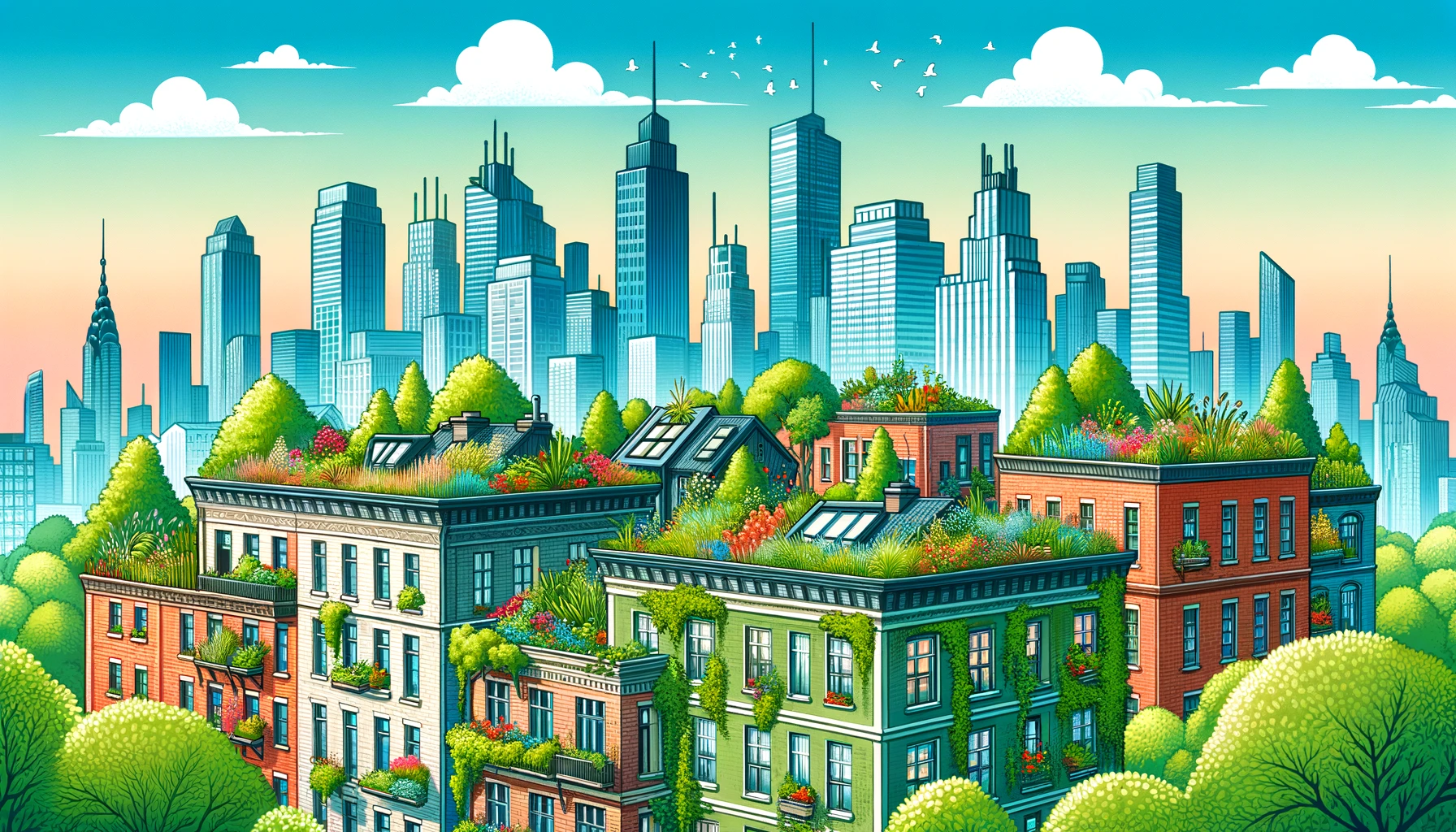Green roofs are becoming increasingly popular not just for aesthetic reasons, but also for the environmental benefits they offer. They help insulate buildings, help manage rainwater and reduce urban heat islands. And, as a bonus, they provide small ecosystems for insects and birds. But most soils used for green roofs are sterile, and their quality steadily declines over time. That means you need to constantly supplement them with fertilizers or new soil, which is not exactly sustainable.
Now, a team of researchers has a different idea: just add fungus.

Green roofs, also known as living roofs, are exactly what they sound like: roofs of buildings covered with vegetation. They’re like the hidden groves of the urban environment, offering a patch of nature where you’d least expect it. The concept isn’t new — people have been using sod roofs for centuries in parts northern Europe. However, the modern twist on green roofs is all about integrating them into the urban fabric for environmental, economic, and social benefits.
In cities, where concrete jungles dominate, green roofs offer a sanctuary for birds, bees, and butterflies. By creating these small ecosystems, we’re giving a nod to biodiversity, which is crucial for a healthy planet. Plus, who doesn’t love the idea of a building that buzzes with life?
In theory, green roofs need very little management; it’s a living, self-sustained ecosystem. But in practice, this only works if the ecosystem is healthy — down to the very last microbes.
In practice, the micro- part of the ecosystem is often neglected. This translates to sterile soils with quality that steadily degrades over time.
“Green roofs have a shelf life and they’re not always the self-sustaining ecosystems that we think they are,” says senior author Bala Chaudhary, an associate professor of environmental studies at Dartmouth. They can be beneficial to urban areas but tend to lose their efficacy over time.
A Dartmouth-led research team set out to test a method that could be applied to support climate resilience in cities. The team created an experimental green roof in Chicago, testing how the addition of native microorganisms would change the soil microbial community over time. They were particularly interested in tracking the presence of beneficial mycorrhizal fungi.
Inoculating soil

Mycorrhizal fungi are a group of fungi that form symbiotic relationships with the roots of most plant species, creating a mutually beneficial partnership. This underground network, sometimes referred to as the “Wood Wide Web,” allows plants to absorb water and nutrients more efficiently, thanks to the extensive reach of the fungi’s hyphae. In exchange, plants provide the fungi with carbohydrates produced through photosynthesis.
These connections not only enhance plant growth and health but also play a critical role in soil structure and fertility. Mycorrhizae are crucial for ecosystem balance, aiding in plant communication, nutrient cycling, and even in the resistance against certain pathogens. This intricate relationship is what researchers were trying to achieve in the green roofs.
They obtained mycorrhizal fungi from a local restored prairie and “inoculated” the green roof in Chicago with it. The green roof had native plants and green roof succulents. Then they followed the evolution of the green roof for two years, using a molecular technique called “DNA metabarcoding.” This approach enables the tracking of multiple microorganisms in one sample. This allowed researchers to ensure that any effect was due to the inoculation and not other stray fungi that were brought by the wind or birds.
Overall, the results were telling. The green roof had a higher microbial diversity and the soil was healthier after the inoculation. In fact, the results surprised even the researchers.
“In this urban rooftop setting, we saw more diversity in the fungal communities of the inoculated soil,” said lead author Paul Metzler, soil ecology lab manager in the Department of Environmental Studies at Dartmouth. “The long-term and consistent effects of the inoculum were quite surprising, as it’s not necessarily something you would expect when working with such small microorganisms.”
“Passive dispersal of the fungi likely resulted in the successful establishment of a small number of species, but active inoculation with native fungal species resulted in an immediate shift to a diverse and unique fungal community. When urban soils are constructed or modified by human activity, this is an opportunity for an intervention that will persist and add diversity to that system,” the study authors conclude.
The roof of the future
Green roofs remain an attractive proposition, but one that is difficult to scale. Not all buildings are suitable for the extra weight and soil conditions, for instance. Then, the initial setup of a green roof can be expensive. It’s not just about throwing some soil and seeds on a roof. You have to consider waterproofing, root repellants, drainage, and structural needs. Plus, like any garden, they require ongoing maintenance. For building owners, the upfront cost and the commitment to maintenance can be significant deterrents.
The advantages are also significant and in plenty of instances, they’re absolutely worth it. But while green roofs are often presented as a “set it and forget it” system, the study authors show that this is not really the case unless you plan accordingly — down to the smallest details and the smallest microorganisms.
Ultimately, the research shows how we can enhance the sustainability of green roofs and extend their benefits over a longer period. This approach not only supports the health of the plants and the ecosystem of the green roof but also contributes to the broader goals of urban resilience and climate adaptation. As cities continue to grow and seek solutions to environmental challenges, incorporating living, breathing ecosystems into their infrastructure becomes increasingly important.
“Our cities could be a window into the future,” says Chaudhary. “They are experiencing the impacts of climate change — warming temperatures and increased drought and flooding — in an intensified way, which make them a great microcosm to study some of these impacts below ground.”
The study was published in New Phytologist.









